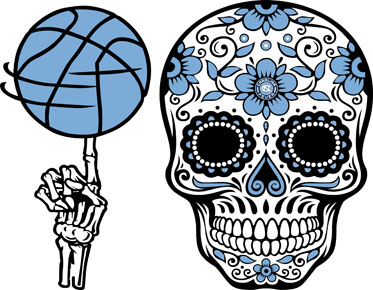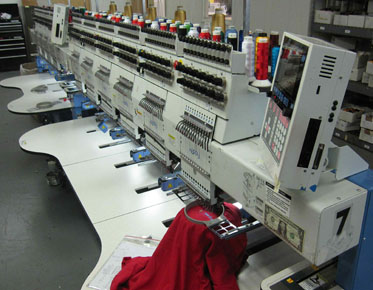Textures and Vectors: Elevating Your Artwork's Feel
Art is a multi-sensory experience. Beyond what meets the eye, texture plays a pivotal role in how we perceive and connect with artworks. Texture adds depth, dimension, and a tactile quality to visual compositions, making them more engaging and immersive. In the digital age, vector graphics conversion have become a popular medium for creating visually stunning artworks. In this comprehensive guide, we will explore the fascinating world of textures and vectors, how they intersect, and how you can use them to elevate your artwork's feel.
The Significance of Texture in Art
Texture is a fundamental element in the world of art. It refers to the tactile quality or surface characteristics of an object or image. Texture can be both visual and tactile, and it plays several essential roles in art:
- Visual Interest: Texture
adds visual interest to an artwork by breaking up flat surfaces. It
creates variations in light and shadow, which draw the viewer's eye and
create a dynamic composition.
- Depth and Dimension: Texture
can convey the illusion of depth and dimension. In two-dimensional art,
such as paintings and digital graphics, texture helps objects appear
three-dimensional and lifelike.
- Emotional Impact: Different
textures evoke specific emotions. For example, a rough texture can convey
ruggedness and toughness, while a smooth texture may evoke feelings of
calm and serenity.
- Engagement: Textured surfaces invite touch and exploration, enhancing the viewer's engagement with the artwork. This physical interaction can create a more profound connection to the piece.
The Versatility of Vector Graphics
Vector graphics are digital images created using mathematical equations, defining shapes, lines, and colors. Unlike raster graphics (like JPEGs or PNGs), vector graphics are infinitely scalable without loss of quality. This scalability makes them a versatile choice for various applications, from logos and illustrations to web design and animation. Vector graphics are created using vector illustration software like Adobe Illustrator or Inkscape.
- Scalability: Vector
graphics can be resized to any dimensions without losing clarity or
sharpness. This makes them ideal for everything from small icons to large
billboards.
- Editable: Vector graphics
are composed of individual, editable objects. You can easily adjust
colors, shapes, and sizes, making them highly adaptable for creative
projects.
- Clean and Precise: Vector
graphics are characterized by clean, precise lines and shapes. This
precision is especially valuable in design, where accuracy is paramount.
- Small File Sizes: Vector files are typically smaller in size compared to raster images. This is advantageous for web design and digital media where loading times matter.
Now, let's delve into how textures and vectors can work together to create captivating artworks.
Incorporating Textures into Vector Graphics
Adding texture to vector graphics is a creative process that enhances the visual appeal and feel of your artworks. Here's how you can incorporate textures into vector designs:
1. Overlay Textures
● One of the most common methods is overlaying texture images onto your
vector artwork. You can find a wide range of texture images, from wood and
paper to fabric and grunge textures, available online.
● Adjust the opacity of the texture layer to control how prominently it
appears in your design. Experiment with blending modes like overlay, soft
light, or multiply for different effects.
● This technique can be used to add subtle texture to backgrounds, create distressed or vintage looks, or add depth to flat objects.
2. Texture Brushes
● Many vector illustration software programs offer texture brushes that
allow you to paint textures directly onto your vector objects. These brushes
mimic the appearance of traditional art media like watercolor or oil paint.
● Use texture brushes to add organic and handcrafted textures to your vector illustrations. They are particularly effective for creating expressive and artistic designs.
3. Pattern Fills
● Vector software often includes the option to fill shapes with patterns.
You can create custom patterns or use pre-made texture patterns.
● Patterns are useful for adding repeating textures like wallpaper, fabric, or tiled surfaces to your vector designs.
4. Gradient Meshes
● Gradient meshes are a powerful tool in vector design. They allow you to
create complex color and texture transitions within vector shapes.
● Use gradient meshes to simulate realistic textures like the sheen on metal surfaces, the grain of wood, or the contours of organic forms.
Elevating Your Artwork's Feel with Texture
1. Enhancing Realism
● When creating vector illustrations of objects found in the real world, like fruits, animals, or landscapes, incorporating textures can make them appear more lifelike. Adding a grainy texture to a wooden surface or fur-like texture to an animal can create a convincing sense of realism.
2. Creating Atmosphere
● Texture can help convey the mood or atmosphere of your artwork. For instance, rough textures might evoke a sense of ruggedness in an outdoor scene, while soft textures can evoke a feeling of comfort and coziness in an interior design illustration.
3. Telling a Story
● Texture can be a storytelling device. It can suggest the history and wear and tear of objects in your artwork. A weathered texture on a signpost may hint at a long journey, while a cracked texture on a potion bottle may suggest an ancient elixir.
4. Adding Visual Interest
● Flat, monochromatic vector designs can sometimes lack visual interest. Texture can break up large areas of color, making the artwork more engaging. For instance, adding a subtle texture to a background can prevent it from feeling dull and lifeless.
5. Guiding the Eye
● Texture can be strategically placed to guide the viewer's eye. A textured path or surface can lead the viewer's gaze through the artwork, emphasizing certain elements and creating a flow.
Practical Tips for Texturing Vector Graphics
To successfully incorporate textures into your vector graphics, keep these practical tips in mind:
1. Choose Textures Wisely
● Select textures that complement your overall design and concept. Ensure that the texture enhances rather than distracts from the artwork.
2. Maintain Consistency
● Be consistent with the style and scale of your textures throughout the artwork. This ensures that the textures feel like a cohesive part of the design.
3. Experiment with Blending Modes
● Different blending modes can produce varying effects when overlaying textures. Experiment with blending modes to achieve the desired look.
4. Consider Context
● Think about the context of your artwork. The same texture might be suitable for a grungy poster but out of place in a sleek corporate logo.
5. Practice Patience
● Achieving the right texture can be a trial-and-error process. Be patient and willing to make adjustments until you achieve the desired result.
Conclusion: Elevating Your Artwork's Feel with Textures and Vectors
Texture is a powerful tool in the world of art
and design. When combined with the versatility of vector graphics, it opens up
a world of creative possibilities. Whether you're aiming to enhance realism,
create a particular mood, or simply add visual interest to your vector artwork,
textures can help you achieve your artistic goals. So, embrace the tactile
dimension of art and explore the artistry of textures and vectors to elevate
your artwork's feel and captivate your audience in a multi-sensory experience.



